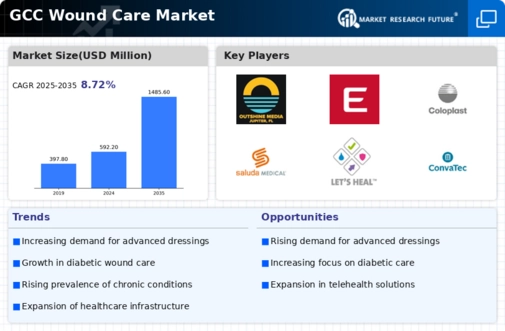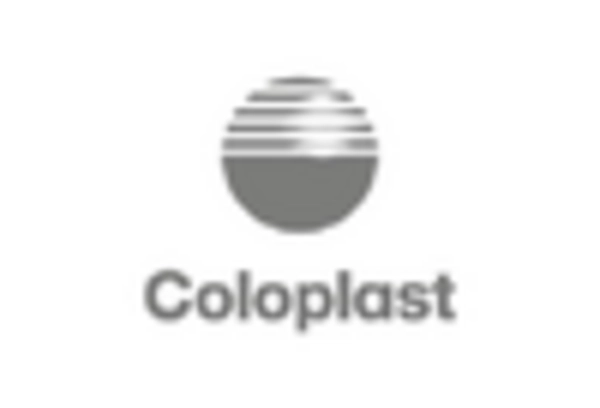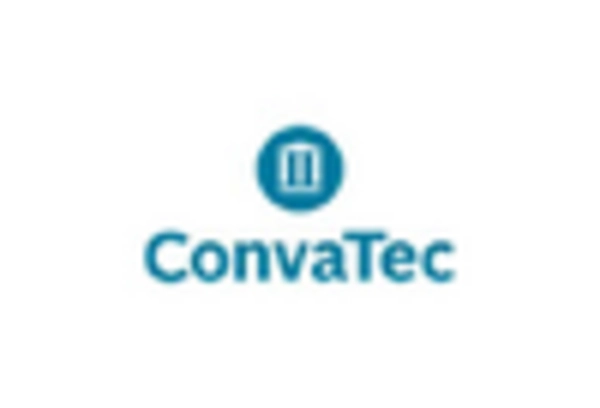Increasing Incidence of Chronic Wounds
The rising prevalence of chronic wounds, particularly among the aging population in the GCC, is a notable driver for the wound care market. Chronic conditions such as diabetes and vascular diseases contribute significantly to the incidence of non-healing wounds. Reports indicate that approximately 20% of individuals with diabetes may develop foot ulcers, necessitating advanced wound care solutions. This trend underscores the urgent need for effective wound management strategies, thereby propelling the demand for specialized products and services within the wound care market. As healthcare providers focus on improving patient outcomes, investments in innovative wound care technologies are likely to increase, further stimulating market growth.
Rising Awareness of Wound Care Solutions
There is a growing awareness among healthcare professionals and patients regarding the importance of effective wound care solutions in the GCC. Educational programs and workshops are increasingly being organized to inform stakeholders about the latest advancements in wound management. This heightened awareness is expected to lead to a greater adoption of advanced wound care products, which could potentially increase market penetration. As healthcare providers become more knowledgeable about the benefits of specialized wound care treatments, the demand for innovative solutions is likely to rise, thereby positively impacting the wound care market.
Technological Advancements in Wound Management
Technological advancements play a crucial role in shaping the wound care market. Innovations such as bioengineered skin substitutes, smart dressings, and telemedicine solutions are transforming traditional wound management practices. The integration of technology not only enhances treatment efficacy but also improves patient monitoring and outcomes. For instance, smart dressings equipped with sensors can provide real-time data on wound conditions, allowing for timely interventions. As these technologies become more accessible, healthcare providers in the GCC are expected to increasingly adopt them, thereby driving growth in the wound care market.
Aging Population and Increased Healthcare Needs
The aging population in the GCC is a significant driver for the wound care market. As individuals age, they often experience a decline in skin integrity and an increase in comorbidities, leading to a higher risk of wounds. Statistics suggest that the elderly population in the GCC is projected to grow by over 30% in the next decade, which will likely escalate the demand for effective wound care solutions. This demographic shift necessitates a focus on specialized wound management products and services tailored to the needs of older adults, thereby fostering growth in the wound care market.
Government Initiatives and Healthcare Investments
Government initiatives aimed at enhancing healthcare infrastructure in the GCC are pivotal for the wound care market. Increased funding for healthcare facilities and programs focused on wound management reflects a commitment to improving patient care. For instance, the GCC countries have allocated substantial budgets for healthcare development, with some nations investing over $10 billion annually in healthcare improvements. These investments facilitate the adoption of advanced wound care products and technologies, thereby expanding market access. Furthermore, public health campaigns aimed at educating healthcare professionals and patients about wound care management are likely to enhance awareness and drive demand for effective solutions in the wound care market.

















Leave a Comment